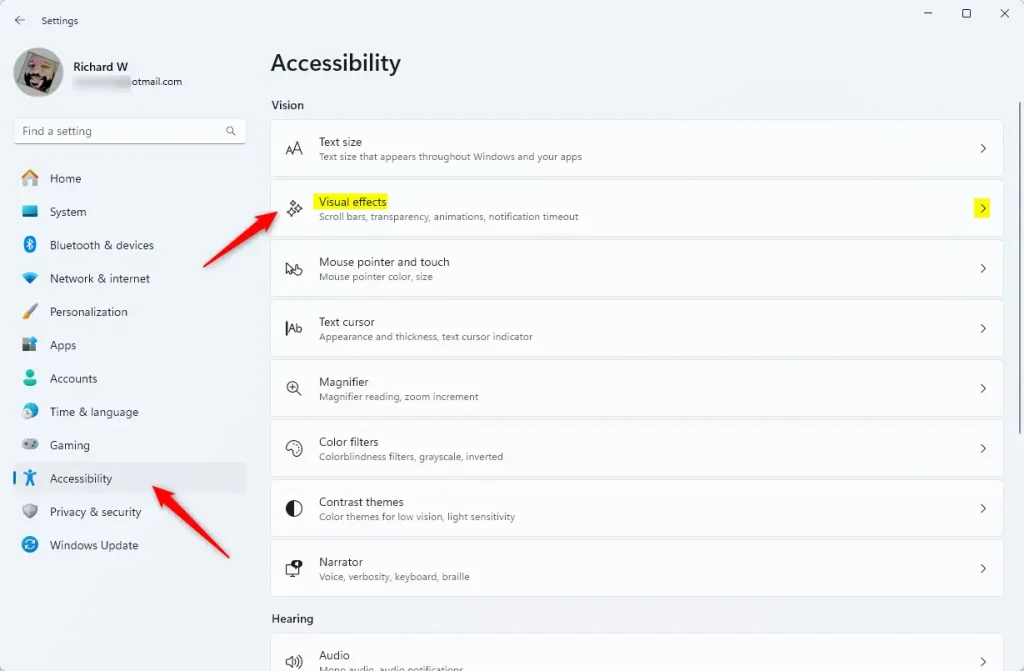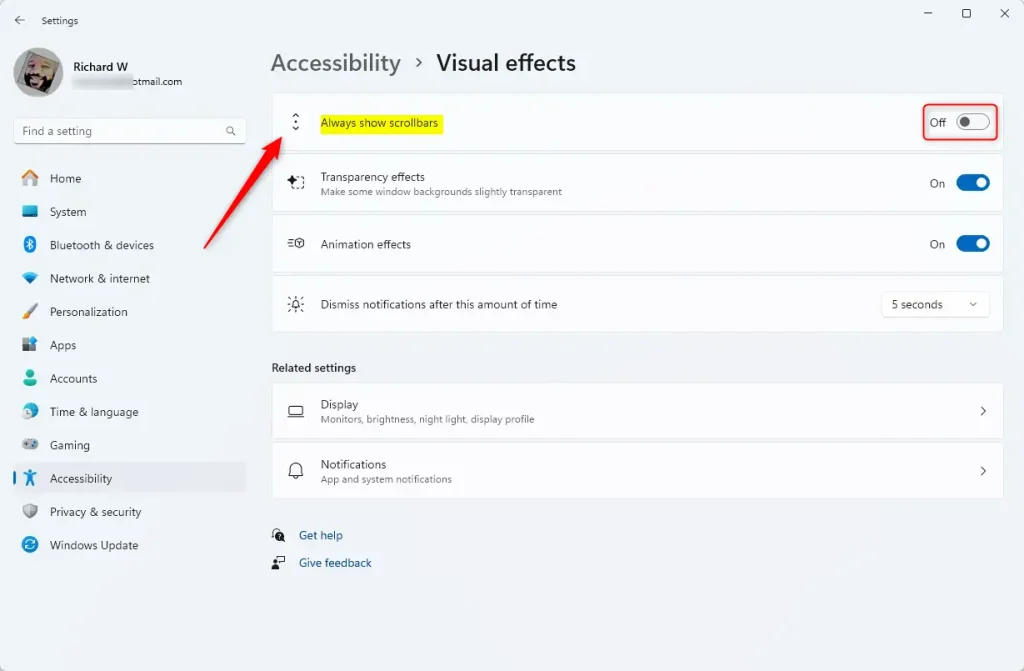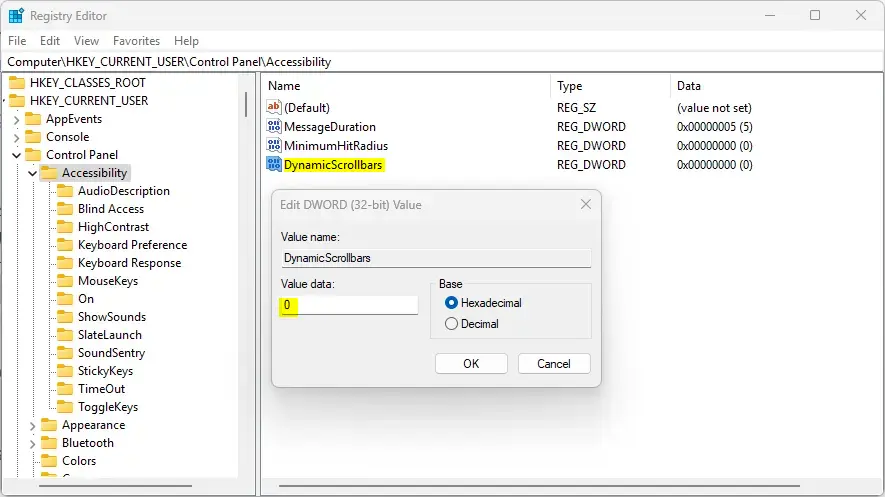This article describes steps to enable or disable a feature to always show scrollbars in Windows 11.
The scrollbar in Windows is a graphical user interface element that appears on the side of a window or a pane. It allows the user to scroll through the content of a window or a pane that is too large to fit on the screen simultaneously.
Scrollbars in Windows will show on the Start menu, Settings app, and other applications only after you hover over the window with your mouse and intend to scroll.
In Windows 11, the scrollbar is designed to be a part of the Fluent Design System, which aims to provide a more modern and adaptive user interface.
The scrollbar will disappear when you leave the window and reappear when you want to scroll again. This feature is part of Fluent Design Microsoft is incorporating in Windows, which defines elements that adapt to the environment and actions.
How to enable or disable always show scrollbars in Windows 11
As described above, the scrollbar will disappear when you leave the window and reappear when you intend to scroll again.
Here’s how to do it.
First, open the Windows Settings app.
Then, select Accessibility on the left and the Visual effects tile on the right to expand it.

On the Accessibility > Visual effects settings pane, select the “Always show scrollbars” tile. Then, toggle the switch button to the On position to enable it.
To disable it, toggle the switch button to the Off position.

Exit the Settings app when done.
Turn on or off “Always show scrollbars” using the Windows Registry Editor
Yet another way to enable or disable always showing the scrollbars is to use the Windows Registry editor.
First, open the Windows Registry and navigate to the folder key path below.
Computer\HKEY_CURRENT_USER\Control Panel\Accessibility
Next, double-click the DynamicScrollbars (REG_DWORD) name on the Accessibility right pane to open it.
Then, enter a value 0 to turn on “Always show scrollbars.”
Enter 1 to turn off “Always show scrollbars.”
If you do not see the “DynamicScrollbars” item, right-click a blank area and create a new DWORD (32-bit) registry item.
Then, enter the name “DynamicScrollbars” and the value you want.

Save your changes and restart your computer.
That should do it!
Conclusion:
- Enabling or disabling the “Always show scrollbars” feature in Windows 11 can improve user experience based on individual preferences.
- The option to toggle this feature can be easily accessed through the Windows Settings app, providing a user-friendly interface for customization.
- Alternatively, users can modify this setting via the Windows Registry Editor for more advanced control over the display of scrollbars.
- Exploring these methods allows users to adapt their Windows 11 experience to suit their needs better and enhance usability.

Leave a Reply